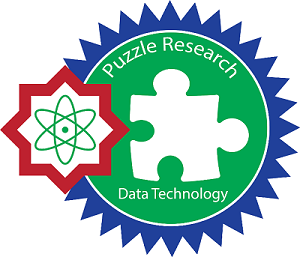ADDITIONAL MENU
A Hybrid CNN-RNN Model for Enhanced Anemia Diagnosis: A Comparative Study of Machine Learning and Deep Learning Techniques
Abstract
This study proposes a hybrid Convolutional Neural Network-Recurrent Neural Network (CNN-RNN) model for the accurate diagnosis of anemia types, leveraging the strengths of both architectures in capturing spatial and temporal patterns in Complete Blood Count (CBC) data. The research involves the development and evaluation of various models of single-architecture deep learning (DL) models, specifically Multi-Layer Perceptron (MLP), Convolutional Neural Network (CNN), Recurrent Neural Network (RNN), and Fully Convolutional Network (FCN). The models are trained and validated using stratified k-fold cross-validation to ensure robust performance. Key metrics such as test accuracy are utilized to provide a comprehensive assessment of each model's performance. The hybrid CNN-RNN model achieved the highest test accuracy of 90.27%, surpassing the CNN (89.88%), FCN (85.60%), MLP (79.77%), and RNN (73.54%) models. The hybrid model also demonstrated superior performance in cross-validation, with an accuracy of 87.31% ± 1.77%. Comparative analysis highlights the hybrid model's advantages over single-architecture DL models, particularly in handling imbalanced data and providing reliable classifications across all anemia types. The results underscore the potential of advanced DL architectures in medical diagnostics and suggest pathways for further refinements, such as incorporating attention mechanisms or additional feature engineering, to enhance model performance. This study contributes to the growing body of knowledge on AI-driven medical diagnostics and presents a viable tool for clinical decision support in anemia diagnosis
Keywords
Anemia Diagnosis; Deep Learning; Hybrid CNN-RNN Model; Machine Learning; Medical Diagnostics
Full Text:
PDFReferences
O. V Chinelo, E. Chukwuka, A. C. Ifeoma, and others, “Causes of anemia due to diminished red blood cell production in pediatrics,” Int. J. Sci. Adv., vol. 3, no. 5, pp. 711–718, 2022. doi: 10.51542/ijscia.v3i5.6
A. Cortés Buelvas, “Anemia and transfusion of red blood cells,” Colomb. Med., vol. 44, no. 4, pp. 236–241, 2013.
G. Wiciński Michałand Liczner, K. Cadelski, T. Kołnierzak, M. Nowaczewska, and B. Malinowski, “Anemia of chronic diseases: wider diagnostics—better treatment?,” Nutrients, vol. 12, no. 6, p. 1784, 2020. doi: 10.3390/nu12061784
Y. Balarajan, U. Ramakrishnan, E. Özaltin, A. H. Shankar, and S. V Subramanian, “Anaemia in low-income and middle-income countries,” Lancet, vol. 378, no. 9809, pp. 2123–2135, 2011. doi: 10.1016/S0140-6736(10)62304-5
M. D. Cappellini, K. M. Musallam, and A. T. Taher, “Iron deficiency anaemia revisited,” J. Intern. Med., vol. 287, no. 2, pp. 153–170, 2020. doi: 10.1111/joim.13004
S.-R. Pasricha, H. Drakesmith, J. Black, D. Hipgrave, and B.-A. Biggs, “Control of iron deficiency anemia in low-and middle-income countries,” Blood, J. Am. Soc. Hematol., vol. 121, no. 14, pp. 2607–2617, 2013. doi: 10.1182/blood-2012-09-453522
M. N. Garcia-Casal, O. Dary, M. E. Jefferds, and S.-R. Pasricha, “Diagnosing anemia: Challenges selecting methods, addressing underlying causes, and implementing actions at the public health level,” Ann. N. Y. Acad. Sci., vol. 1524, no. 1, pp. 37–50, 2023. doi: 10.1111/nyas.14996
C. Elmore and J. Ellis, “Screening, treatment, and monitoring of iron deficiency anemia in pregnancy and postpartum,” J. Midwifery & Women’s Heal., vol. 67, no. 3, pp. 321–331, 2022. doi: 10.1111/jmwh.13370
S. Uyoga et al., “Point-of-care haemoglobin testing in African hospitals: a neglected essential diagnostic test,” Br. J. Haematol., vol. 193, no. 5, pp. 894–901, 2021. doi: 10.1111/bjh.17431
A. Mittal, S. Dhalla, S. Gupta, and A. Gupta, “Automated analysis of blood smear images for leukemia detection: a comprehensive review,” ACM Comput. Surv., vol. 54, no. 11s, pp. 1–37, 2022. doi: 10.1145/3514495
A. E. Obstfeld, “Hematology and machine learning,” J. Appl. Lab. Med., vol. 8, no. 1, pp. 129–144, 2023. doi: 10.1093/jalm/jfac108
K. T. Putra et al., “A Review on the Application of Internet of Medical Things in Wearable Personal Health Monitoring: A Cloud-Edge Artificial Intelligence Approach,” IEEE Access, 2024. doi: 10.1109/ACCESS.2024.3358827
A. Mildon, D. de Romaña, M. E. D. Jefferds, L. M. Rogers, J. M. Golan, and M. Arabi, “Integrating and coordinating programs for the management of anemia across the life course,” Ann. N. Y. Acad. Sci., vol. 1525, no. 1, pp. 160–172, 2023. doi: 10.1111/nyas.15002
S. Monisha, “To Study the Prevalence of Anemia in Antenatal Patients attending OPD in a Tertiary Care Centre,” Madras Medical College, Chennai, 2022.
A. L. Deierlein, K. Antoniak, M. Chan, C. Sassano, and C. R. Stein, “Pregnancy-related outcomes among women with physical disabilities: A systematic review,” Paediatr. Perinat. Epidemiol., vol. 35, no. 6, pp. 758–778, 2021. doi:
M. Jahangiri, F. Rahim, N. Saki, and A. Saki Malehi, “Application of Bayesian Decision Tree in Hematology Research: Differential Diagnosis of β-Thalassemia Trait from Iron Deficiency Anemia,” Comput. Math. Methods Med., vol. 2021, pp. 1–10, 2021. doi: 10.1111/ppe.12781
A. K. Sahoo, C. Pradhan, and H. Das, “Performance evaluation of different machine learning methods and deep-learning based convolutional neural network for health decision making,” Nat. inspired Comput. data Sci., pp. 201–212, 2020. doi: 10.1155/2021/6401105
A. Kumar, N. Gaur, S. Chakravarty, M. H. Alsharif, P. Uthansakul, and M. Uthansakul, “Analysis of spectrum sensing using deep learning algorithms: CNNs and RNNs,” Ain Shams Eng. J., vol. 15, no. 3, p. 102505, 2024. doi: 10.1016/j.asej.2023.102505
M. Toma and O. C. Wei, “Predictive modeling in medicine,” Encyclopedia, vol. 3, no. 2, pp. 590–601, 2023. doi: 10.3390/encyclopedia3020042
T. C. H. Nguyen and A. Diab, “Using machine learning to forecast and assess the uncertainty in the response of a typical PWR undergoing a steam generator tube rupture accident,” Nucl. Eng. Technol., vol. 55, no. 9, pp. 3423–3440, 2023. doi: 10.1016/j.net.2023.05.025
H. Wei, H. Shen, J. Li, R. Zhao, and Z. Chen, “AneNet: A lightweight network for the real-time anemia screening from retinal vessel optical coherence tomography images,” Opt. & Laser Technol., vol. 136, p. 106773, 2021. doi: 10.1016/j.optlastec.2020.106773
E. Aboelnaga, “Anemia Types Classification.” 2023. url: https://www.kaggle.com/datasets/ehababoelnaga/anemia-types-classification
DOI: http://dx.doi.org/10.24014/ijaidm.v7i2.29898
Refbacks
- There are currently no refbacks.
Office and Secretariat:
Big Data Research Centre
Puzzle Research Data Technology (Predatech)
Laboratory Building 1st Floor of Faculty of Science and Technology
UIN Sultan Syarif Kasim Riau
Jl. HR. Soebrantas KM. 18.5 No. 155 Pekanbaru Riau – 28293
Website: http://predatech.uin-suska.ac.id/ijaidm
Email: ijaidm@uin-suska.ac.id
e-Journal: http://ejournal.uin-suska.ac.id/index.php/ijaidm
Phone: 085275359942
Journal Indexing:
Google Scholar | ROAD | PKP Index | BASE | ESJI | General Impact Factor | Garuda | Moraref | One Search | Cite Factor | Crossref | WorldCat | Neliti | SINTA | Dimensions | ICI Index Copernicus
IJAIDM Stats










